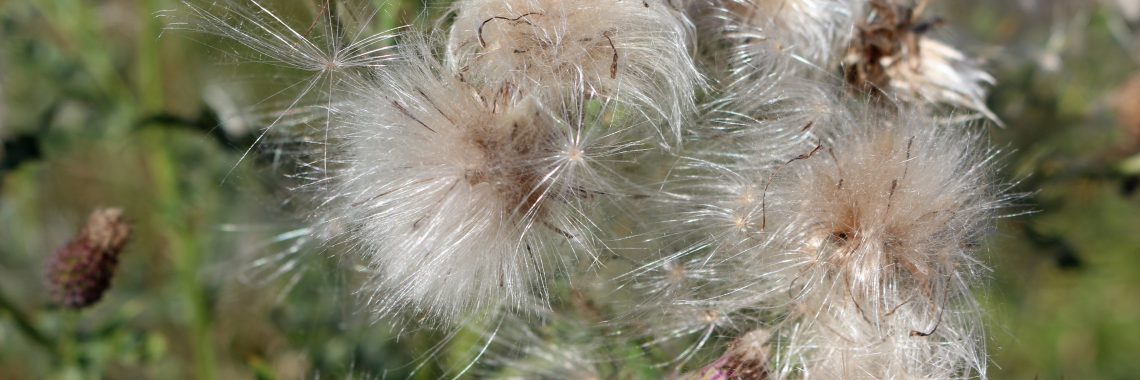Many weeds have started to lose their luster, but late August through October is a great time for perennial and biennial weed control in many Wyoming locations despite the onset of seeds or leaves that don’t look quite as healthy as they did this spring.
This timing can vary depending on your location and species of weeds you are looking to control.
Perennial and biennial weeds during fall are still actively moving nutrients from leaves and stems to roots even when they look like they are almost dormant. Fall can also be a great time for control of some winter annual weedy plants, such as cheatgrass.
This article focuses on perennial and biennial weed control and tries to avoid getting into the “weeds” so to speak with perennial versus winter annual weed control. Here is a great guide for folks looking for information on cheatgrass control and management in Wyoming http://bit.ly/cheatgrass-handbook.
Systemic herbicides are often the most readily applied herbicides for fall weed control. For those unfamiliar with the term systemic, this refers to herbicides that enter a plant and are most effective by traveling through the system of a plant to disrupt normal plant functions. As plants start to become dormant for the winter season, they are in the process of moving nutrients from their leaves to their root system (reserves). Applying herbicides during this window of active nutrient movement allows herbicides to more readily move throughout the plant’s system and allow the best conditions for a systemic herbicide to be effective.
Typical herbicide choices for many fall weed control applications include products with the active ingredients of glyphosate, dicamba, 2‑4D, metsulfuron, and triclopyr. There are other options available as well. Local weed and pest control districts can help select the correct herbicide for the species of weed you are looking to control.
Correct identification is always important for proper control. Some of the more common types of perennial and biennial weeds in Wyoming include species of thistle, houndstongue, common mullein, knapweed species, leafy spurge, white top, and many others.
Your local University of Wyoming Extension office or weed and pest district can help with identification for tricky weeds or sometimes hard to determine rosettes of biennial weeds. A list of noxious weeds is at the Wyoming Weed and Pest Council Website http://bit.ly/wyo‑noxious‑weeds.
As with any herbicide applications, there are many factors that can lead to decreased control. Fluctuating weather events in fall can affect applications, for example. Applying herbicides at the correct time of year is only one piece of the puzzle. Fall applications should not be the only time of herbicide applications for many weed management plans. The sooner weeds can be controlled, the better.
Future time and money inputs related to control dramatically decrease with a fast response.
Brian Sebade is a University of Wyoming Extension educator serving southeast Wyoming and can be reached at (307) 721‑2571 or at bsebade@uwyo.edu.





